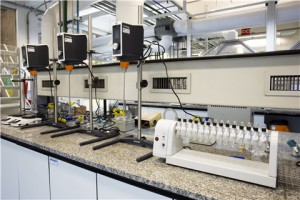Braskem has announced the launch of its first partially renewable solvent made from sugarcane ethanol. The product, called HE-70S and with raw materials containing biobased carbon, is part of the oxygenated solvents group, which represents a new option in the company’s chemical products portfolio.
 The new solvent will be used mainly by the footwear, furniture and ceramics industries, as well as by ink and thinner manufacturers. Because it is from the oxygenated solvents group, the solution features high solvency power and a high evaporation rate, differentials that offer greater advantages in its application and lower environmental impacts. This is the first product developed by the Solvents Laboratory, which was inaugurated by Braskem in November 2018 at the Petrochemical Complex in the ABC region of Greater São Paulo.
The new solvent will be used mainly by the footwear, furniture and ceramics industries, as well as by ink and thinner manufacturers. Because it is from the oxygenated solvents group, the solution features high solvency power and a high evaporation rate, differentials that offer greater advantages in its application and lower environmental impacts. This is the first product developed by the Solvents Laboratory, which was inaugurated by Braskem in November 2018 at the Petrochemical Complex in the ABC region of Greater São Paulo.
The new solution already was showcased at two events held in February, in Novo Hamburgo, Rio Grande do Sul, Brazil. The first was the Primus Inter Pares Assintecal Braskem Awards 2019, an event sponsored by Braskem that recognizes successful case studies in the footwear industry. The second event was the International Fair for Leather, Chemical Product, Components, Machinery and Equipment for Footwear and Tanneries (FIMEC), where Braskem showcased products and launched the new solution.
Today, Brazil consumes some 700,000 tons of solvents annually. Braskem, a leading solvents producer in Brazil, has been investing heavily in the business since 2013. In 2017, the company launched three new brands for the segment (Braskem EzolemTM, Braskem PluractTM and Braskem SensitisTM), which effectively expanded its alternatives for producers of paints, thinners and adhesives, as well as for agribusiness.
Source
Braskem, press release, 2019-04-02.
Supplier
Share
Renewable Carbon News – Daily Newsletter
Subscribe to our daily email newsletter – the world's leading newsletter on renewable materials and chemicals










